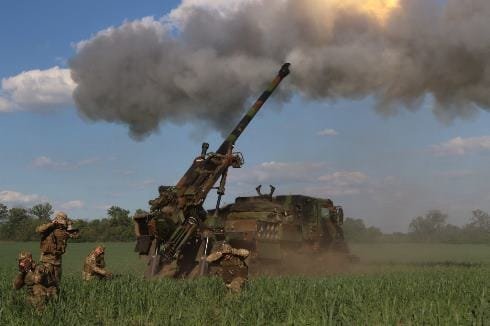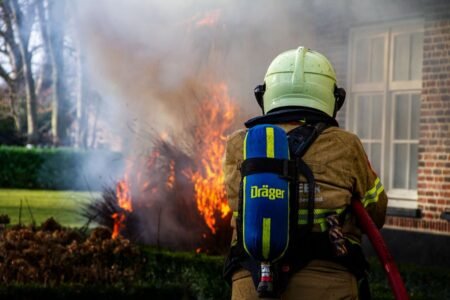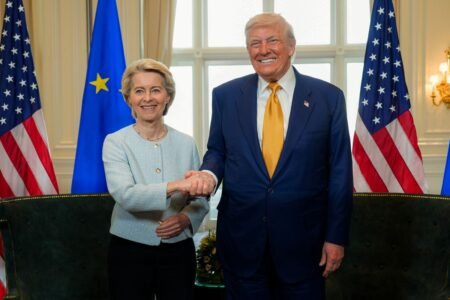Ukrainian military affairs are boosting military spending in Europe, way beyond Ukraine or even its immediate neighbors. Fears are high that Russia may look to push back on NATO influence in additional areas of central Europe. Among all countries which are beefing up their military, Lithuania is implementing its NATO commitment with the purchase of Boxer fighting vehicles, Caesar howitzers and cyber-assets.
Military affairs in Lithuania ramping up
Of all three Baltic States, Lithuania has increased its military spending the most. State-sponsored LRT reports: “On Thursday, the Lithuanian parliament Seimas unanimously approved a proposal to increase this year’s national defence funding to 2.52 percent of GDP. The 2022 budget amendment, allocating 298 million euros in additional funding for national defence, passed the Seimas with 123 votes in favour, none against, and no abstentions.” This increase brings the overall budget to a percentage higher than many Western nations, despite the country’s more modest size.
Lithuania has long been aware of the Russian threat looming above it – as any smaller country would feel, next to a large and imperialistic neighbor. Bad blood has always tainted relationships between the two countries, as the Soviet rule of Lithuania in 1940, followed by the Russian invasion in 1944, was inaugurated by the institution of totalitarianism, political deportations and KGB torture.
Naturally, concerns have grown yet further since February of 2022, when Russia enacted its threats to march West. Lithuania was not the target of the invasion, but felt the bullet fly by, hence the further considerable increase in military spending.
Lithuania is no sitting duck
Vilnius has not resigned itself to helplessly watch history unfold at its own expense, and has designed proactive strategies which are currently being implemented.
As a member of the NATO alliance, and a EU member, Lithuania has been effectively implementing international sanctions on Russia, at considerable individual risk. Lithuania shares its border with the Russian exclave of Kaliningrad, which has been unable to ensure the transit of much-needed goods (such as steel and gas) towards and from the Russian mainland, thus attracting growls from Moscow.
Due to its position close to the potential European frontline, Lithuania has proactively developed its activity within NATO. The Lithuanian Defence department writes: “Since joining the Alliance in 2004, we have been actively involved in international NATO-led missions and operations in the Balkans, Afghanistan, where we have led the Provincial Reconstruction Team in Ghowr, Iraq and elsewhere. Lithuania continues to contribute to NATO’s missions and operations.” Following a number of Russian-suspected cyber-attacks, Lithuania has focused its efforts on cybersecurity within NATO, on top of troop contribution to operations.
In addition, Lithuania has steadily increased its military expenditure over the years, to reach 2.5 of GDP in 2022, to modernize its military forces. Since 2014, Vilnius has acquired numerous Western weapon systems, namely Boxer Infantry Fighting Vehicles, NASAM low- and high-altitude air defence systems, and military trucks. 21 German Pzh 2000 howitzers were also purchased, an insufficient number due to the very high price tag of track-mounted artillery, but enough to matter on the battlefield.
Ukraine is stirring the pot
There is no doubt that the Ukrainian invasion has fuelled Lithuanian military spending, as only a sturdy defense strategy will be likely to guarantee the Baltic State’s safety. Many central European nations have benefitted from military assistance from the West, who wish to strengthen stability around Ukraine, in a bid to deter any further ambitions from Russia.
Following France’s donation of Caesar artillery guns to Ukraine, Lithuania has committed to purchasing 18 units from France’s Nexter. LRT reporter Augustas Stankevicius writes: “On Monday, Anu?auskas signed a letter of intent on purchasing 18 wheeled self-propelled howitzers with newly appointed French Defence Minister Sebastien Lecorn. Under the agreement, Lithuania will also join the development program of the Caesar Mark II new generation artillery system being implemented by the Procurement Agency of the French Ministry of Defence.” The Caesar canon has been deployed in Mali, Syria, Afghanistan and Iraq, with ubiquitous success. The modernized platform is based on a 6×6 (or 8×8, depending the version) truck chassis, which enables it to fire multiple rounds with pinpoint accuracy before swiftly relocating to avoid counter-battery fire (Shoot and scoot). Individual units are easily transportable and deployable, and cost a fraction of their track-mounted counterparts, both on units and upkeep, thanks to simplified maintenance. Their deployment in the Ukraine has already shown effective results, as army blog ArmyRecognition reports: “the shells fired from the CAESAR guns hit the Russian armored vehicles at a distance of 22,110 m and a rate of fire of 5 rounds in 55 sec.”
These collective characteristics enable armies to acquire a very high number of howitzers, and sprinkle them throughout the battlefield. Coordinated with drone reconnaissance, they can accurately destroy targets over 40 kilometers away, using Bonus or Excalibur rounds.
Further acquisitions will finish making Lithuanian forces a sizable opponent and a stability guarantee within the Baltic region. An agreement has been reached to purchase Javelin infantry missiles, to render the formidable threat of Russian armor inoperative – a promising tactic which is showing results in the Ukraine. Military analyst Joe Saballa writes: “The Lithuanian Ministry of National Defense has announced that the country plans to spend approximately 1 billion euros ($1.09 billion) on new military weapons from the US and Germany. The move is part of Lithuania’s increased defense spending amid growing tensions in Europe due to the ongoing war between Russia and Ukraine.”
Additional infantry fighting vehicles will be purchased from Germany to enable mobility and territory control, furthered by the acquisition of four UH-60 multi-purpose helicopters. These aircraft will also be contributing to intelligence and reconnaissance (another key edge on Russian strategy, as Ukraine is showing), alongside combat drones and new radars. Ukraine has been showing a lethal combination of military intelligence capabilities and accurate striking power, effective enough to foil Russia’s initial plans for a quick and easy victory on its Western neighbor.
Naturally, Lithuania cannot, by itself, expect to reach military equivalence with its gigantic neighbor – but nor does it plan or need to. NATO has been reassuring its European allies with regular training exercises in Central Europe, and reinforcements in aerial presence. Shape headquarters published in March of 2022 that “Overall, NATO has about 130 jets at high alert and there are more than 120 Allied ships at sea, from the High North to the Mediterranean.” What it can do, however, and is doing, is this: make itself a very unattractive target to Russian commanders who would lose far too much in exchange for too little territory. It can also continue cultivating its role as a key NATO player in the Central European area, by further partaking in NATO coordination and training plans and purchasing military equipment from the thriving market of Western Europe. Vilnius’ defence was focused on Lithuania, a mere 20 years ago. Lithuania is now contributing to European stability, way beyond its own borders.








